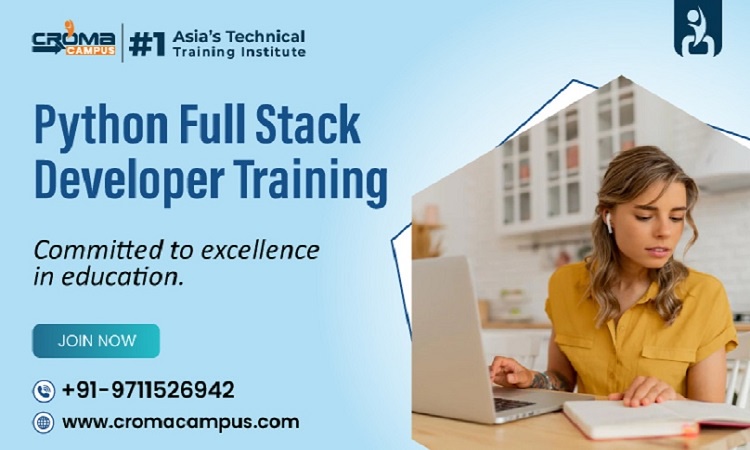Introduction:
Do you wish to be a full-stack engineer who works using Python? That is a great choice. There are multiple benefits of using the Python programming language for web development. Python is most popularly in use for back-end development. However, Python is also useful for front-end development, and languages like HTML are a more common choice. Let’s take you on a journey to become a full-stack developer, and learn what you need on the way. To make this process even simpler, you can go through Python Full Stack Training in Noida.
What is the Role of a Full-Stack Developer?
As a full-stack engineer, you can work on both ends of web app development: The front-end as well as the back end. Front-end development is about how the application appears to the user. On the other hand, back-end development is about the logic that governs the application. Back-end development includes programming the remote server and communicating with one or more database(s).
Overall, a full-stack developer is responsible from the design stage to deployment. However, in some applications, this is only feasible for small projects. Whereas a specialized back-end developer owns a deeper knowledge of back-end development, like database design. Basically, a full-stack developer owns more generalized knowledge. Moreover, on large-scale projects, full-stack engineers are generalists who bridge the gap between two specific forces: Front-end and back-end developers.
Full-Stack Development using Python:
There are multiple benefits to using Python for web development, which mainly include a relatively fast development time. However, the best part about working with Python as a full-stack engineer is the wide career opportunities that it opens for you. There is a constant demand for full-stack and back-end Python engineers. Because Python is commonly in use in data science and machine learning, you can add these skills to your back-end skillset as you advance as a full-stack engineer.
Back-End Development Using Python:
There are multiple Python back-end frameworks including Flask, Django, CherryPy, Turbogears, Pyramid, Bottle, and Falcon. However, we will discuss the most common frameworks which are Django and Flask.
Django
Django is a free as well as open-source project with a huge developer community. Therefore, it sees constant enhancements in terms of its features of security, user and roles management, or database migration management.
Flask
Flask is another well-known Python web framework. More light in weight than Django, it is popularly known as a micro-framework. Flask is commonly in use to develop the back end of APIs.
Front-End Development Using Python:
Some popular programming languages like HTML, JavaScript, and CSS are typically in use as the front end. However, some recently developed front-end Python frameworks are Skulpt, Brython, and Anvil.
Anvil is a popular full-stack framework that is useful for both front-end and back-end development. You can use Anvil to create a web page’s UI components through drag-and-drop options on Anvil’s graphical interface.
What do You need to Learn to Become a Python Full-Stack Developer?
Programming in Python
Python becomes the most basic essential programming language to learn. You will usually be programming servers with it. However, before you start doing that, make sure you’re well comfortable with Python fundamentals, from algorithms and data structures to object-oriented programming (OOP) with Python.
Web Development Fundamentals
If you’re a beginner to web development, you’ve got two sides to get familiar with.
Front-End Development
- Web fundamentals with the help of HTML, JavaScript, and CSS
- A front-end JavaScript framework such as AngularJS, ReactJS, or VueJS
- A JavaScript library such as jQuery
- Maybe a CSS framework like Bootstrap
Back-End Development
- Designing as well as building Application Programming Interfaces (APIs)
- CRUD operations
- Database knowledge like MySQL, MongoDB, PostgreSQL, or SQLite
- Python back-end frameworks like Django or Flask
A useful tip for you: There are multiple web frameworks to choose from. To bring down your choices, consider the factors that are of top priority to you. For example, you might want to choose a tool that has wider community support as well as good documentation.
Conclusion:
No matter where you stand in your journey as a developer, Python is certainly a great programming language to add to your full-stack development. Learning the skills to build a web application from design to deployment will not only be a fascinating learning process but also an excellent move for your career as well. Take benefit of the growing demand and start learning with Python Full Stack Online Training. Get some hands-on experience with each step of web application development. You will learn how to develop a client page using React, develop an API with Flask, and more.


No comments yet